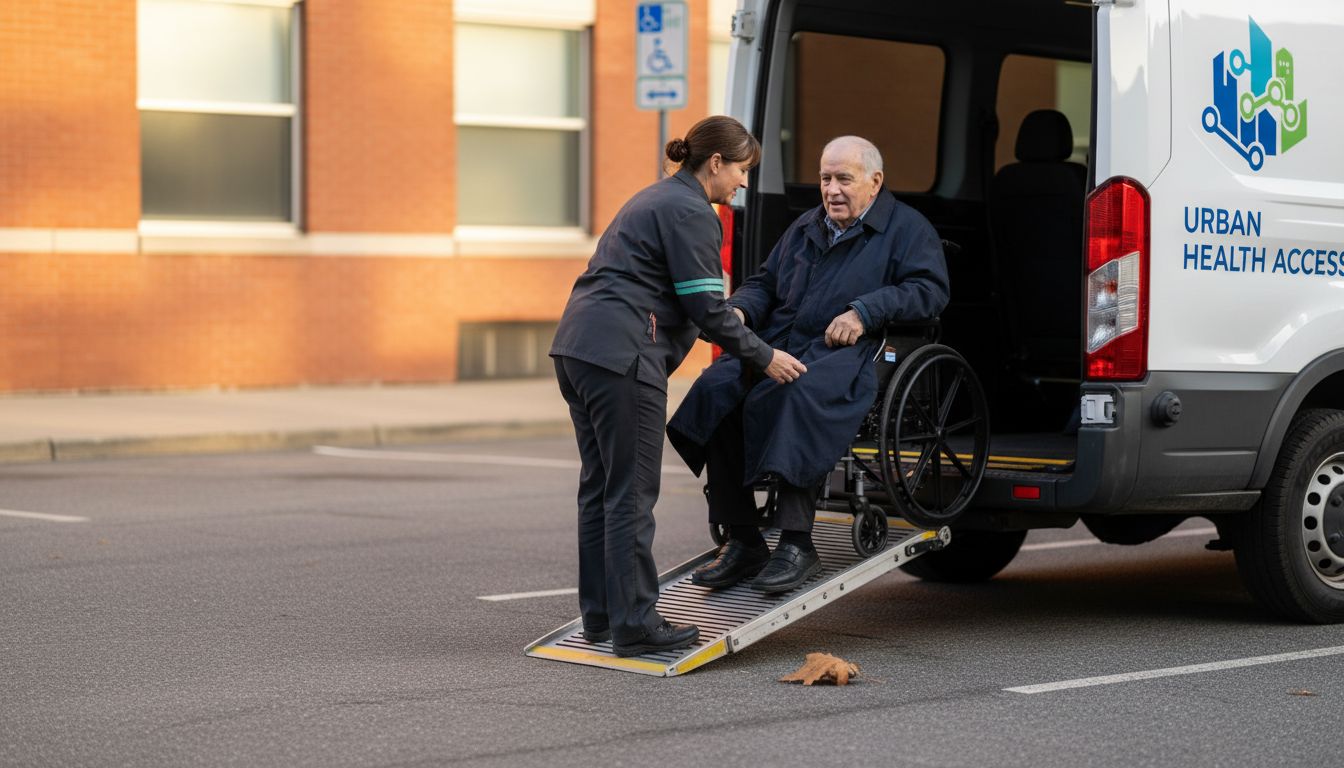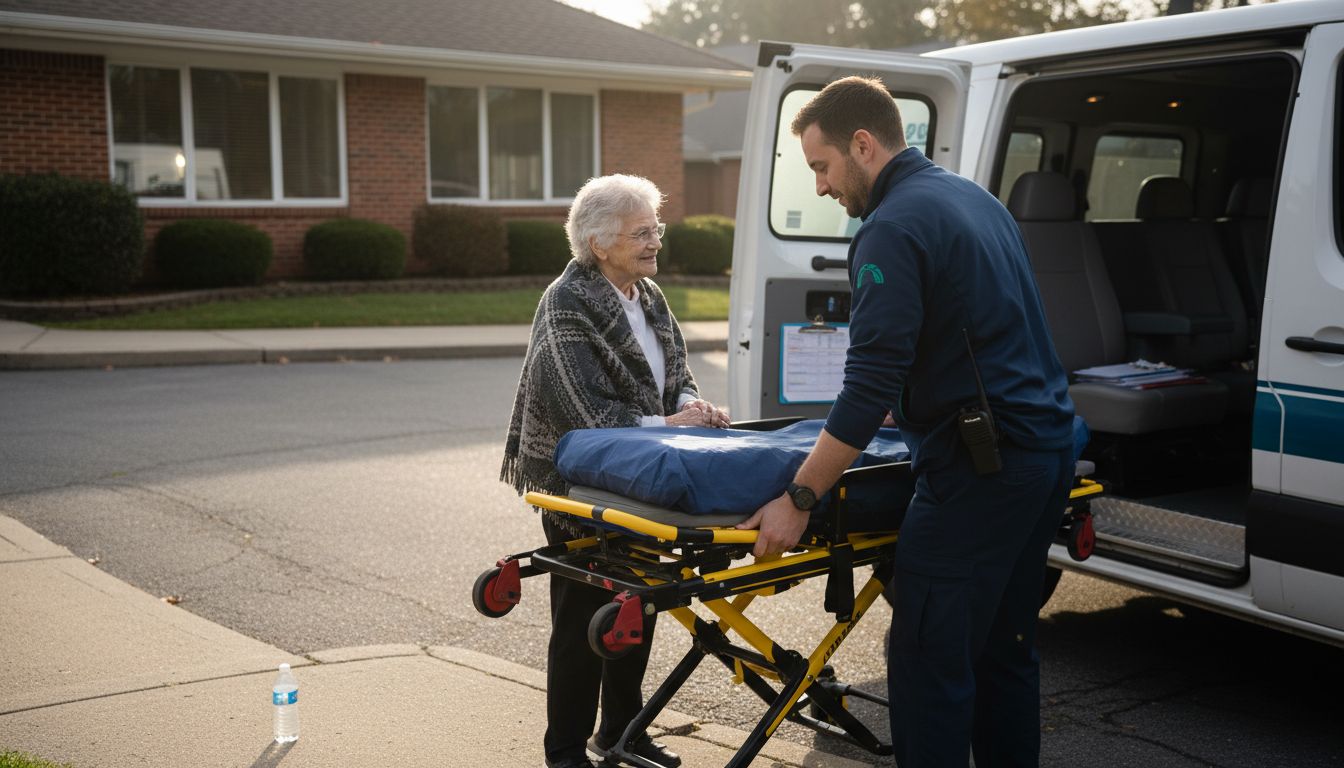Remote Monitoring in Healthcare: 2025 Trends and Best Practices
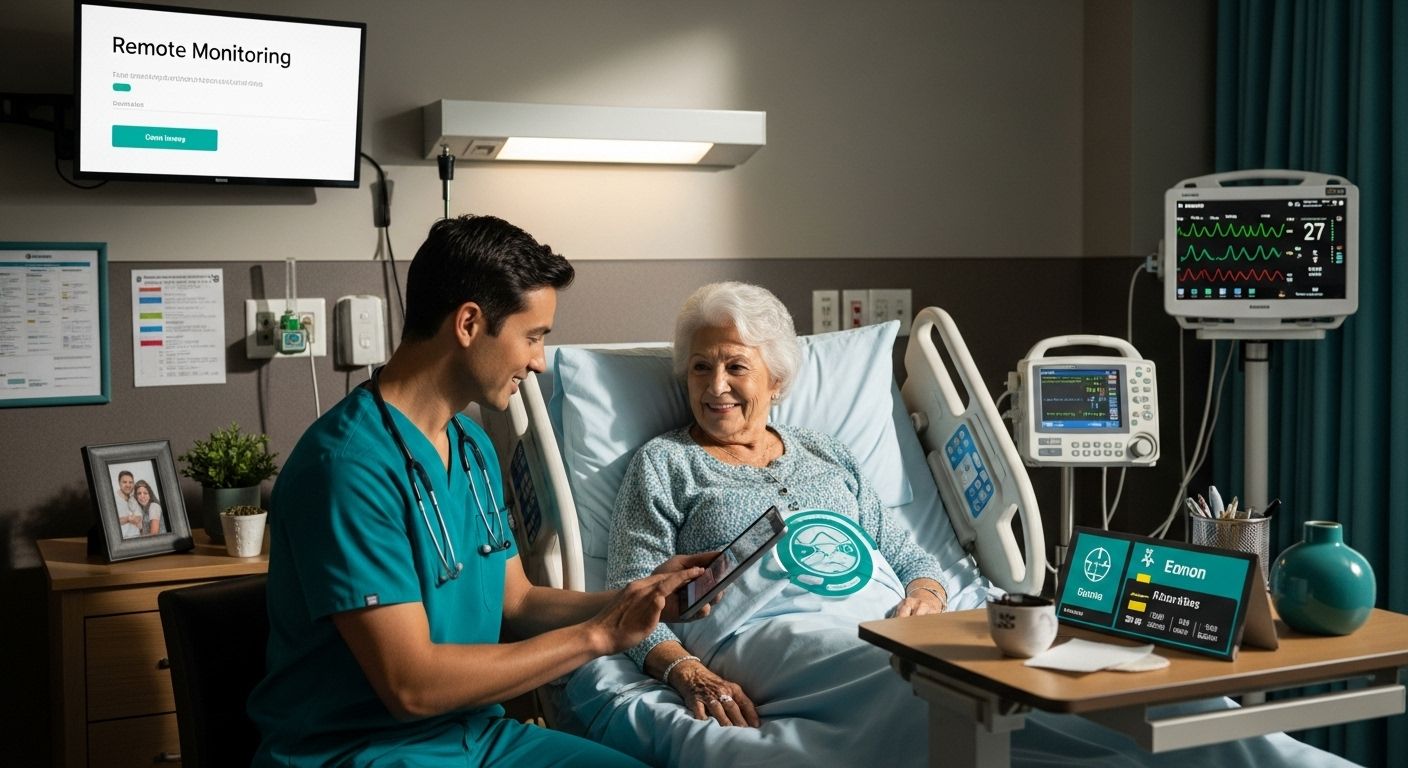
Remote monitoring is changing how doctors care for patients, making it possible to track health without ever stepping into a clinic. You might think this is just another high-tech trend, but take this in. A recent study showed remote programs cut hospitalizations by 32 percent and can slash healthcare costs from $25,000 to $12,000 per patient. That kind of impact is only the beginning. The secret? It is not just about gadgets. It is about reimagining the way care is delivered—giving both patients and providers a whole new way to connect, respond, and stay ahead of health problems before they get serious.
Table of Contents
- How Remote Monitoring Improves Patient Outcomes
- Key Technologies Powering Remote Healthcare
- Challenges And Solutions In Remote Monitoring
- Remote Monitoring Strategies For Diverse Care Settings
Quick Summary
| Takeaway | Explanation |
|---|---|
| Remote monitoring enhances patient outcomes | Continuous tracking leads to early detection and proactive interventions, particularly for chronic diseases. |
| Cost reduction through remote programs | Effective remote monitoring can lower healthcare costs while reducing hospitalization rates by improving resource management. |
| Technology must be user-friendly | Ensuring devices and platforms are accessible is critical for patient engagement and effective use, particularly for older adults. |
| Addressing health equity is essential | Tailoring remote monitoring programs for diverse populations boosts healthcare access and addresses varying technological literacy levels. |
| Integration into existing workflows is crucial | Transforming traditional care models to accommodate remote monitoring can enhance its effectiveness, orientation, and overall patient care. |
How Remote Monitoring Improves Patient Outcomes
Remote monitoring in healthcare represents a transformative approach to patient care, enabling continuous tracking of health metrics without requiring patients to be physically present in medical facilities. This technological advancement allows healthcare providers to gather real-time data, detect potential health issues early, and intervene proactively.
Early Detection and Proactive Intervention
The power of remote monitoring lies in its ability to identify health changes before they become critical. A groundbreaking study published in MDPI’s Healthcare journal analyzed 6,595 patients with hypertension and demonstrated remarkable improvements through remote patient monitoring (RPM). The research revealed that after 90 days of RPM, the proportion of patients with uncontrolled hypertension decreased from 66.3% to 40.2%, with systolic blood pressure improving by an average of 7.3 mmHg.
This early detection mechanism is particularly crucial for chronic disease management. By continuously monitoring vital signs, medication adherence, and symptom progression, healthcare providers can make timely interventions. For instance, patients with conditions like diabetes, heart disease, and respiratory disorders can receive immediate guidance when their metrics indicate potential complications.
Reducing Hospital Readmissions and Healthcare Costs
Remote monitoring significantly impacts healthcare resource utilization. A comprehensive study published in JAMA Network Open evaluated 9,378 COVID-19 patients and found that those enrolled in remote monitoring programs experienced a 32% reduction in hospitalization odds. This not only improves patient outcomes but also helps healthcare systems manage resources more efficiently.
Moreover, economic benefits are substantial. The 2024 evaluation revealed that direct healthcare costs could decrease from $25,000 to $12,000 per patient through effective telemedicine and remote monitoring strategies. These cost savings stem from reduced hospital stays, fewer emergency interventions, and more targeted treatment approaches.
Enhanced Patient Engagement and Self-Management
Remote monitoring empowers patients to take an active role in their healthcare journey. By providing real-time feedback and personalized insights, these technologies encourage individuals to make informed decisions about their health. Patients can track their progress, understand the impact of lifestyle choices, and feel more connected to their healthcare providers.
The psychological benefits are equally significant. Patients experiencing chronic conditions often feel more secure knowing their health is being continuously monitored. This sense of support can lead to improved treatment adherence, better lifestyle modifications, and ultimately, enhanced overall health outcomes.
Learn more about how coordinated platforms support comprehensive patient care.
As healthcare continues to evolve, remote monitoring stands at the forefront of patient-centered care, bridging technological innovation with personalized medical attention. The future of healthcare is not just about treating diseases but preventing them through intelligent, continuous monitoring.
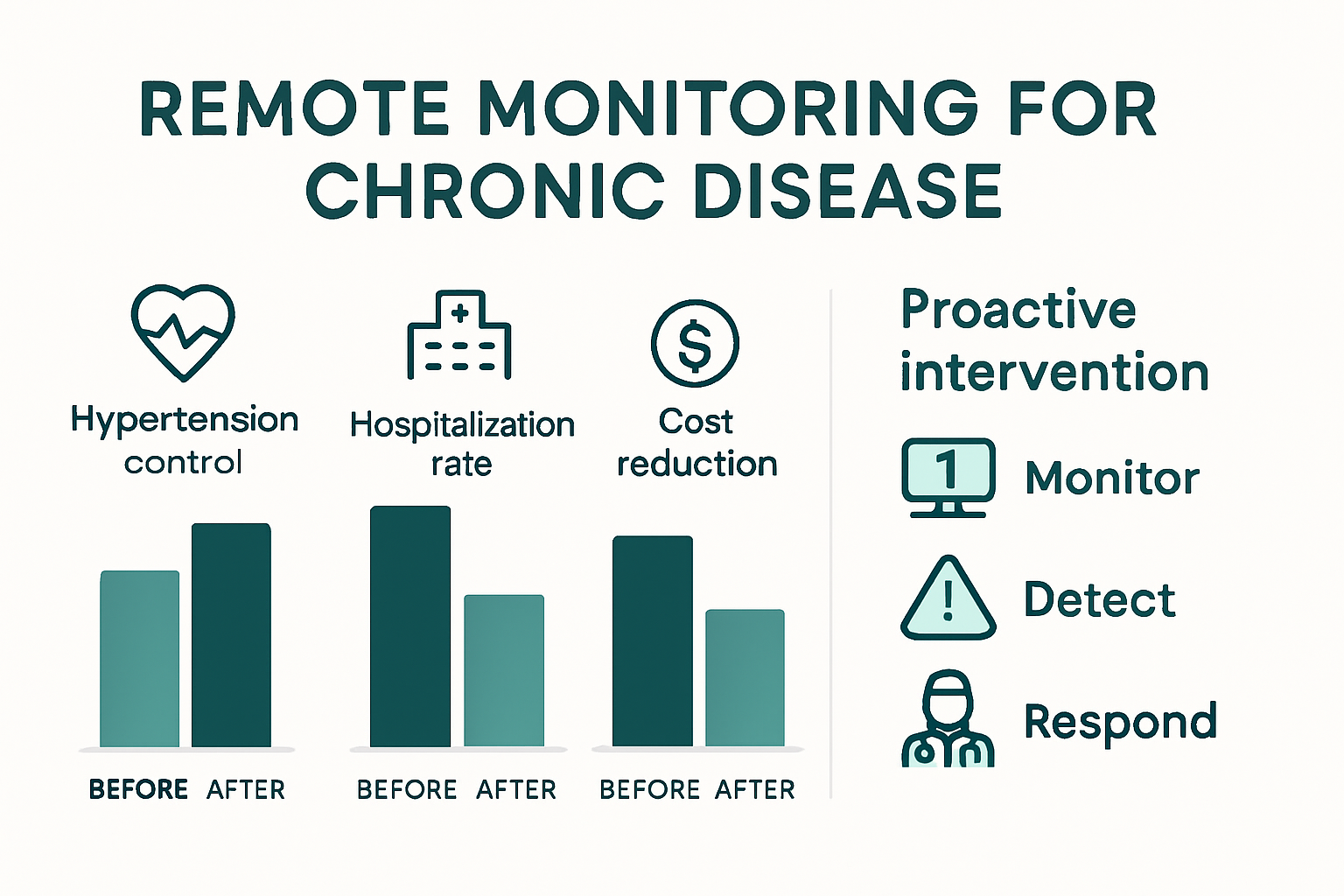
Key Technologies Powering Remote Healthcare
The landscape of remote healthcare is rapidly evolving, driven by a convergence of cutting-edge technologies that are transforming how medical professionals monitor and manage patient health. These innovative solutions are creating unprecedented opportunities for more personalized, efficient, and proactive healthcare delivery.
Wearable Sensors and Internet of Medical Things (IoMT)
Research from the National Library of Medicine highlights the critical role of wearable sensors and Internet of Medical Things (IoMT) technologies in modern remote healthcare. These advanced devices go far beyond simple fitness trackers, offering medical-grade monitoring capabilities that can track complex health parameters with remarkable precision. Smart wearables now incorporate advanced biosensors capable of continuously monitoring heart rate, blood oxygen levels, electrocardiogram (ECG) readings, blood glucose, and even detect early signs of potential health complications.
The sophistication of these devices allows for real-time data transmission, enabling healthcare providers to receive instantaneous updates about a patient’s physiological conditions. For chronic disease management, these technologies represent a quantum leap in patient monitoring, providing unprecedented insights into an individual’s health status without requiring frequent in-person medical visits.
Artificial Intelligence and Predictive Analytics
Artificial intelligence (AI) is revolutionizing remote healthcare by transforming raw medical data into actionable insights. Machine learning algorithms can analyze complex health patterns, predict potential health risks, and provide early warning systems for medical professionals. These AI-powered systems can process vast amounts of patient data, identifying subtle trends and correlations that might escape human observation.
Predictive analytics algorithms can now forecast potential health complications with increasing accuracy, allowing for preventative interventions. For example, AI systems can analyze a patient’s historical health data, current monitoring metrics, and genetic information to assess the probability of future medical events. This approach enables a more personalized and proactive approach to healthcare management.
Cloud Computing and Secure Data Infrastructure
Cloud computing has emerged as a fundamental technology supporting remote healthcare ecosystems. These robust, scalable platforms provide the necessary infrastructure for storing, processing, and sharing massive volumes of medical data securely. Advanced cloud solutions offer end-to-end encryption, ensuring patient data privacy while enabling seamless information exchange between healthcare providers, patients, and medical systems.
Secure data platforms now integrate sophisticated access controls, allowing granular permissions that ensure only authorized personnel can view specific patient information. This technological framework supports interoperability between different healthcare systems, enabling more comprehensive and coordinated patient care.
Explore our latest insights on emerging healthcare coordination trends.
As technology continues to advance, the convergence of wearable sensors, AI, and cloud infrastructure promises to create increasingly sophisticated remote healthcare solutions. These technologies are not just improving medical monitoring but fundamentally reshaping our approach to preventative and personalized healthcare.
Challenges and Solutions in Remote Monitoring
Remote monitoring in healthcare presents a complex landscape of technological promise and operational challenges. While the potential for improved patient care is significant, healthcare organizations must navigate a series of critical obstacles to successfully implement and maintain effective remote monitoring systems.
Data Privacy and Security Concerns
Research from the Journal of Medical Internet Research highlights the paramount challenge of maintaining patient data privacy in remote monitoring technologies. Healthcare providers must implement robust data governance frameworks that protect sensitive medical information while enabling seamless data transmission. Cybersecurity threats represent a significant risk, with potential breaches capable of compromising patient confidentiality and institutional trust.
Effective solutions involve multi-layered security approaches, including end-to-end encryption, strict access controls, and comprehensive compliance with healthcare data protection regulations like HIPAA. Advanced authentication mechanisms, such as biometric verification and tokenized data access, can provide additional layers of protection against unauthorized data access.
Technology Literacy and User Adoption
One of the most significant barriers to successful remote monitoring implementation is user adoption. The RAND Corporation research report emphasizes that technological complexity can create resistance among both healthcare providers and patients. Older patient populations or individuals with limited technological experience may find advanced monitoring devices intimidating or challenging to use.
To address this challenge, healthcare organizations must prioritize user-centered design. This approach involves creating intuitive interfaces, providing comprehensive training programs, and developing devices that are accessible across different age groups and technological skill levels. Simplified user interfaces, clear instructions, and responsive technical support can significantly improve user engagement and technology acceptance.
Organizational and Workflow Integration
Implementing remote monitoring technologies requires fundamental changes in healthcare delivery models. Existing organizational workflows, traditionally designed around in-person consultations, must be reimagined to effectively incorporate continuous remote monitoring. Healthcare professionals may experience information overload, with continuous data streams potentially overwhelming existing decision-making processes.
Successful integration demands strategic approaches, including developing streamlined data dashboards that present critical information concisely, implementing AI-powered analytics to filter and prioritize relevant medical insights, and redesigning clinical workflows to accommodate remote monitoring data. Training programs that help medical professionals understand and effectively utilize these new technologies are crucial for successful implementation.
Learn more about coordinating healthcare platforms for seamless integration.
As remote monitoring technologies continue to evolve, addressing these challenges will be critical to realizing their full potential. By developing comprehensive strategies that prioritize security, user experience, and organizational adaptability, healthcare systems can transform these obstacles into opportunities for more effective, patient-centered care.
Remote Monitoring Strategies for Diverse Care Settings
Remote monitoring technologies must be adaptable and inclusive, recognizing the unique healthcare needs of diverse patient populations across different care settings. Developing comprehensive strategies that address varied demographic, socioeconomic, and cultural contexts is crucial for effective implementation and equitable healthcare delivery.
Addressing Healthcare Equity and Access
Research from the Center for Care Innovations highlights the critical importance of designing remote monitoring programs that specifically target health equity. Different patient populations require tailored approaches that consider technological literacy, language barriers, and cultural nuances. For culturally and linguistically diverse communities, this means developing more than just technological solutions but creating comprehensive support frameworks.
A systematic review published in 2025 identified five key strategies to enhance telehealth access for diverse populations. These include providing bilingual technology interfaces, training healthcare staff in cultural competence, offering flexible technological adaptations, supplying necessary technology and support, and integrating digital health navigators who can guide patients through complex medical technologies.
Specialized Approaches for Different Care Environments
Remote monitoring strategies must be dynamically designed to suit various healthcare environments. In rural settings, where healthcare infrastructure might be limited, technologies need to accommodate lower bandwidth connections and potentially simpler devices. Urban environments might require more sophisticated, data-intensive monitoring systems that can handle complex patient networks.
Home health care presents unique challenges, requiring technologies that are user-friendly for elderly or chronically ill patients. Devices must be intuitive, with large interfaces, simple instructions, and robust technical support. For nursing homes and assisted living facilities, remote monitoring solutions should integrate seamlessly with existing care management systems, providing comprehensive health tracking without overwhelming staff or residents.
Comprehensive Program Development and Implementation
The U.S. Department of Health and Human Services provides a comprehensive framework for developing remote patient monitoring programs. Key recommendations include conducting thorough patient suitability assessments, establishing clear program objectives, carefully selecting appropriate technologies, and designing efficient workflows that consider the unique characteristics of different patient populations.
Successful implementation requires a holistic approach that goes beyond technological solutions. This includes ongoing staff training, continuous patient education, regular program evaluation, and a commitment to adapting strategies based on real-world feedback. Healthcare providers must view remote monitoring not as a one-size-fits-all solution but as a flexible, evolving approach to patient care.
Explore strategies for improving healthcare coordination across diverse settings.
As healthcare continues to evolve, remote monitoring strategies must remain dynamic, patient-centered, and responsive to the complex and diverse needs of different communities. By prioritizing inclusivity, technological adaptability, and comprehensive support, healthcare providers can ensure that remote monitoring truly serves all patients effectively.
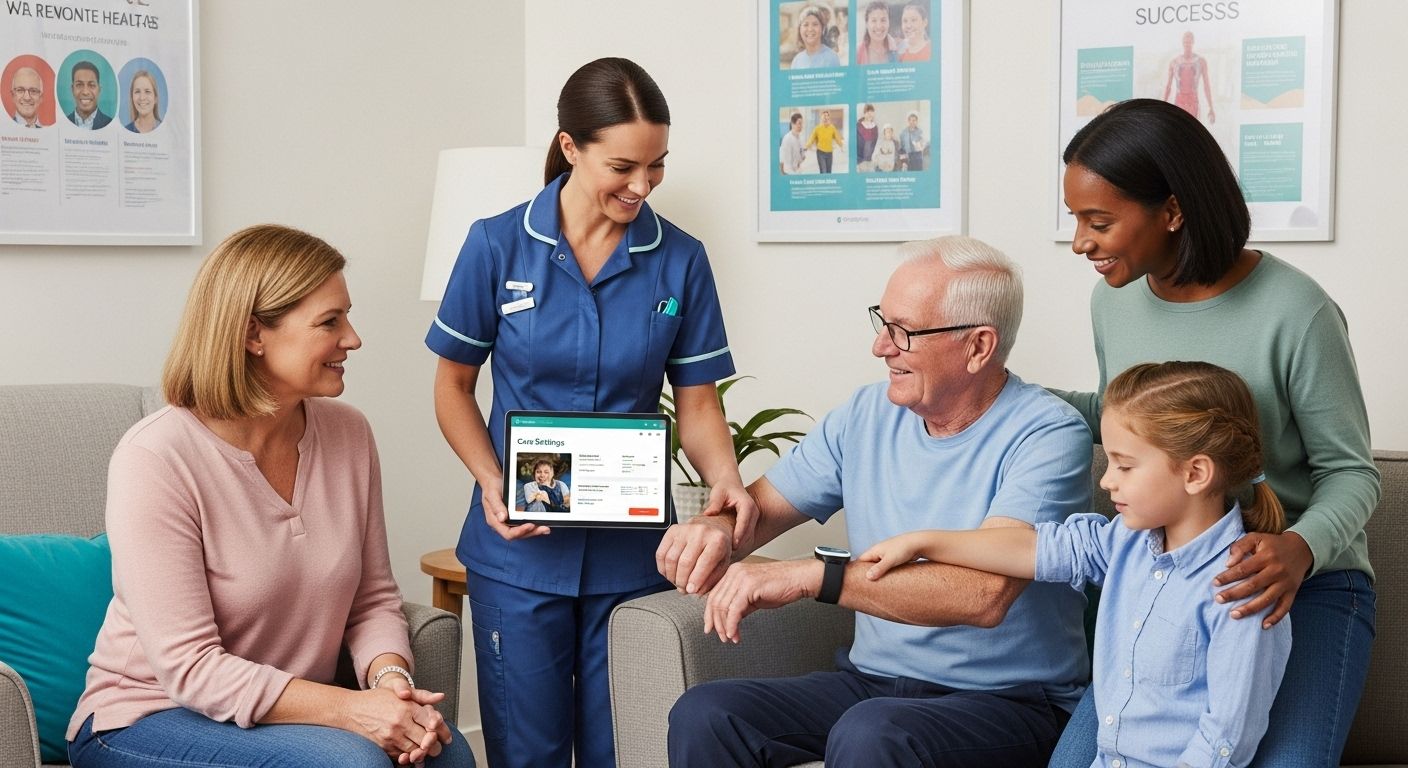
Here is a table summarizing the major statistical outcomes and reductions discussed in the article regarding remote patient monitoring’s impact on health and costs:
| Outcome | Before Remote Monitoring | After Remote Monitoring | %/Amount Reduction | Source/Study |
|---|---|---|---|---|
| Uncontrolled Hypertension (Hypertension Study) | 66.3% | 40.2% | 26.1% absolute reduction | MDPI Healthcare (6,595 patients) |
| Average Systolic Blood Pressure (mmHg) | Baseline | -7.3 mmHg | N/A | MDPI Healthcare (6,595 patients) |
| Hospitalization Odds (COVID-19 RPM Study) | Baseline | 32% lower | 32% reduction | JAMA Network Open (9,378 patients) |
| Direct Healthcare Cost per Patient | $25,000 | $12,000 | $13,000 savings | 2024 Evaluation |
To clarify the technology landscape, this table outlines and compares the key technologies powering remote healthcare as described in the article:
| Technology Type | Key Features/Functions | Role in Remote Care |
|---|---|---|
| Wearable Sensors & IoMT | Tracks heart rate, SpO2, ECG, glucose; real-time medical-grade data | Continuous monitoring; timely alerts |
| Artificial Intelligence & Predictive Analytics | Analyzes health patterns; predicts risks; early warning systems | Personalized, proactive intervention |
| Cloud Computing & Secure Data Infrastructure | Secure, scalable storage; encrypted data transfer; access controls | Safeguards privacy; supports sharing |
Frequently Asked Questions
What are the benefits of remote monitoring in healthcare?
Remote monitoring enhances patient outcomes by enabling early detection of health issues, reducing hospital readmissions, and improving patient engagement in self-management.
How does remote monitoring reduce healthcare costs?
Effective remote monitoring can significantly lower healthcare costs by reducing unnecessary hospitalizations and emergency interventions, allowing for more efficient resource management.
What key technologies are used in remote healthcare monitoring?
Key technologies include wearable sensors, artificial intelligence for predictive analytics, and cloud computing for secure data storage and sharing, all of which facilitate continuous health monitoring.
What challenges does remote monitoring face in implementation?
Challenges include ensuring data privacy and security, addressing technology literacy among users, and integrating remote monitoring into existing healthcare workflows.
Unlock Seamless Remote Healthcare Coordination
Facing growing demands for real-time remote monitoring, many organizations struggle with fragmented workflows, high operational costs, and slow patient response times. This article showed how modern remote monitoring can reduce hospitalizations and lower costs, yet success relies on more than just technology. To truly improve health outcomes and prevent costly readmissions, you must bridge patient care with responsive logistics, efficient communication, and proactive resource allocation.
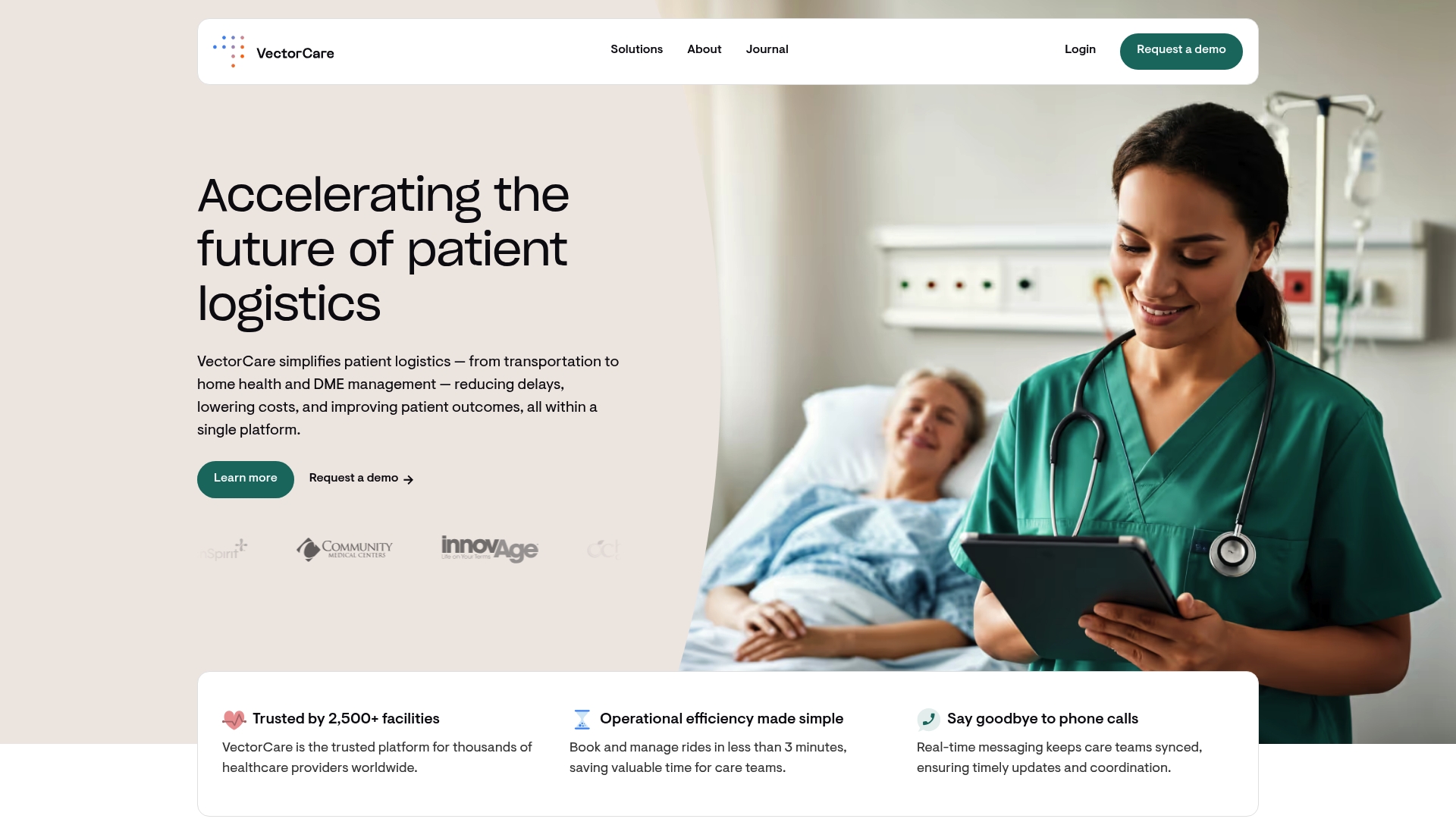
VectorCare delivers the platform you need to connect all the dots. With automated scheduling, secure vendor management, and real-time data insights, you can effortlessly coordinate patient transportation or home health services alongside your remote care programs. Don’t let logistics delays undermine the benefits of remote monitoring. See how VectorCare enables compliant, no-code workflows that support every stakeholder in your care network. Ready to move from best practice to real-world impact? Visit our homepage and start transforming your approach to timely, patient-centered healthcare today.
